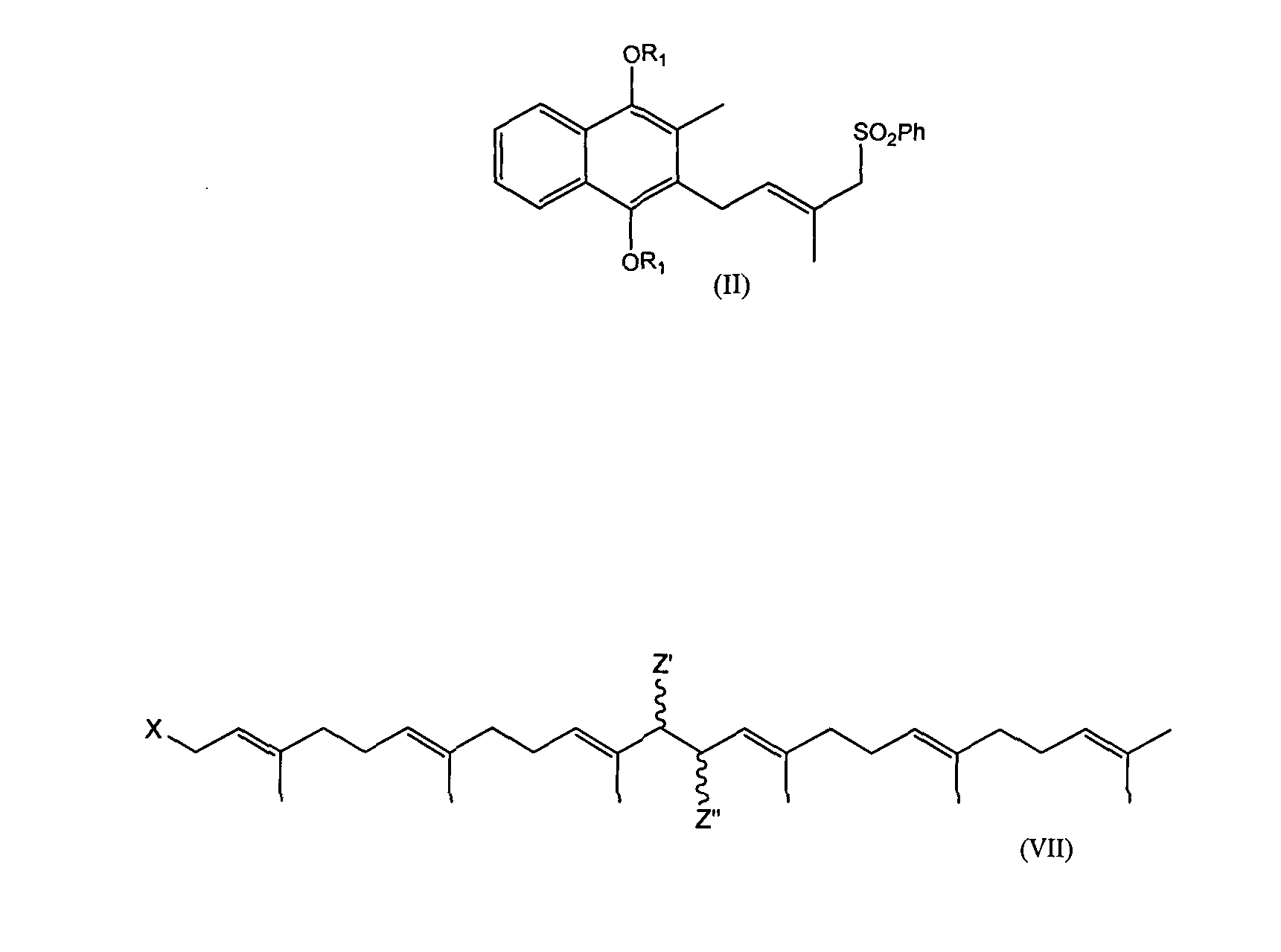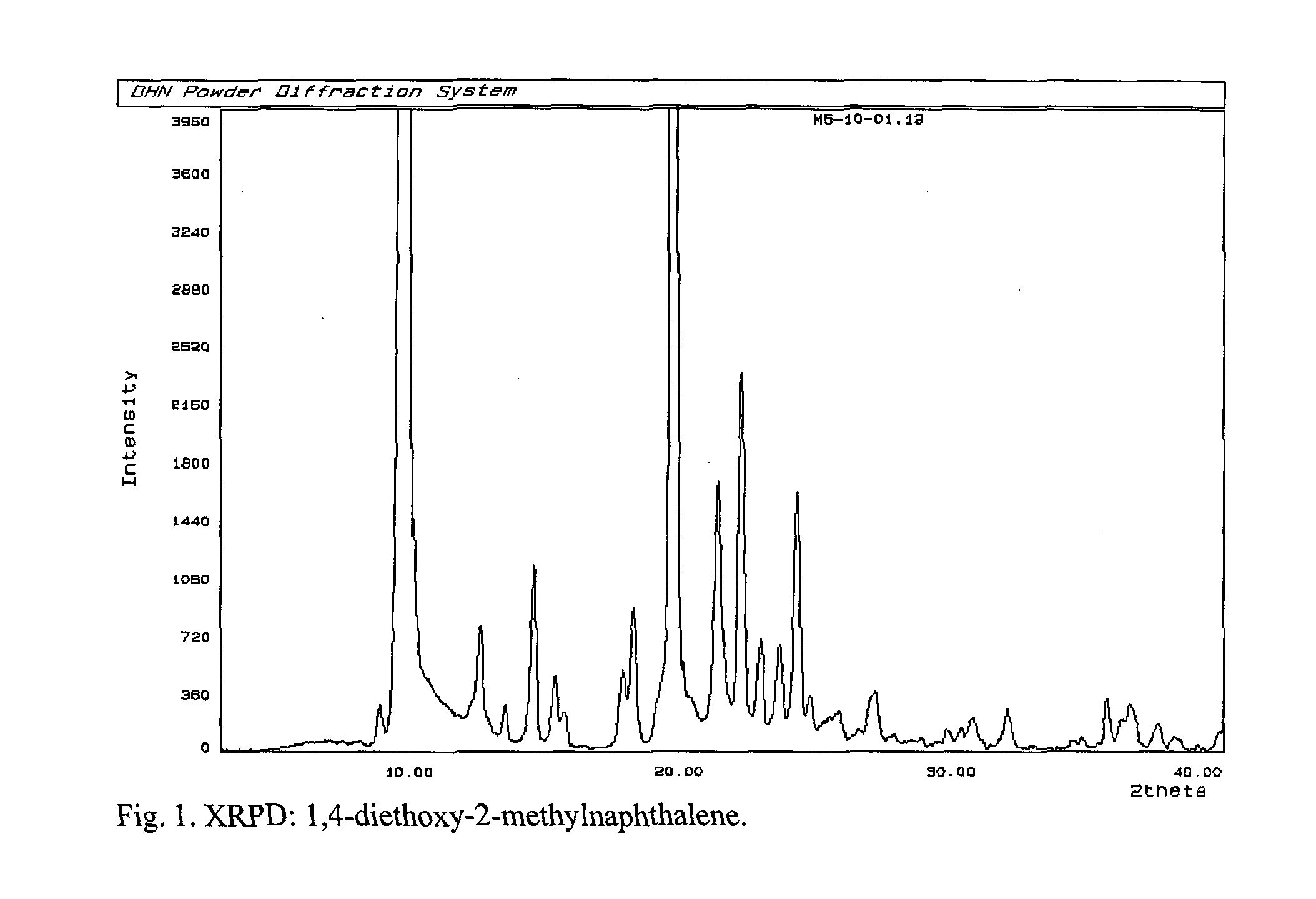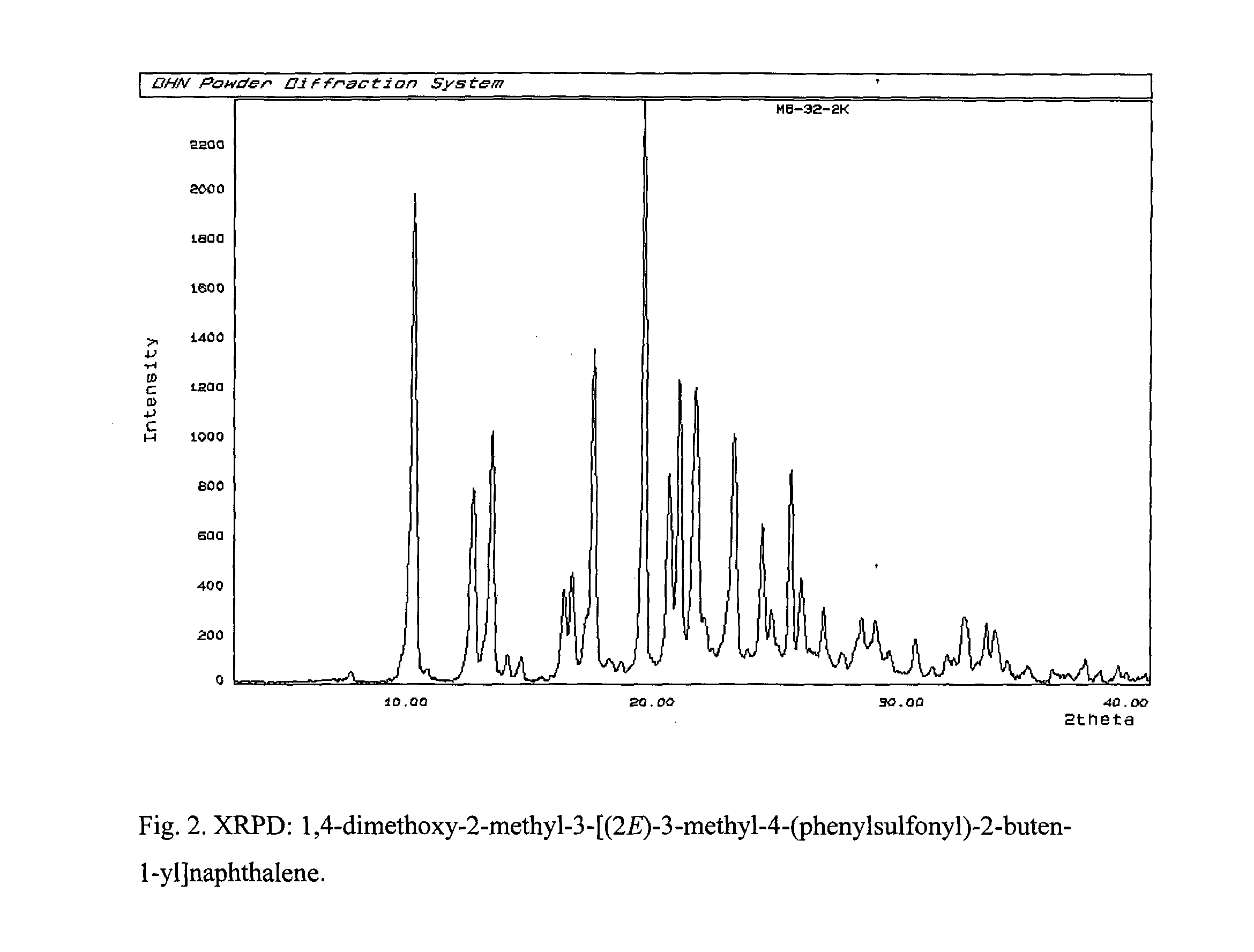Process for preparation of mk-7 type of vitamin k2
a technology of vitamin k2 and mk7, which is applied in the preparation of carbonyl compounds, carbonyl compound preparations, organic chemistry, etc., can solve the problems of deficiency or extinction of beneficial intestinal microflora
- Summary
- Abstract
- Description
- Claims
- Application Information
AI Technical Summary
Benefits of technology
Problems solved by technology
Method used
Image
Examples
example 1
[0080]
[0081]Sodium dithionate (85%, 600 g, 2.93 mol) was dissolved in water (2.6 L). In a reaction vessel of 10 L capacity, menadione (234 g, 1.36 mol) was suspended in ethyl acetate (3.2 L) and stirred under nitrogen to make solution uniform. Sodium dithionate solution was transferred into the reaction vessel and the resulting mixture was vigorously stirred for 10 min. until the solution became yellow. The layers were separated, water phase was discarded, organic phase was washed with water (1×2 L) and brine (1×2 L). The solution was transferred into a round bottom flask. Solvent was removed under reduced pressure to dryness (using high vacuum in the end). The solid was obtained in 248 g yield (calc. yield 236.74 g). The solid was treated with toluene (1.140 L), the solution was condensed up to ⅔ of the initial volume (total volume of removed toluene was about 460 mL). Obtained suspension (about 900 mL) was used in the next step.
example 2
Diethoxymenadiol
[0082]
[0083]The suspension obtained in Example 1 was placed in a reaction vessel of 20 L capacity, equipped with thermocouple, N2 line adapter, azeotropic condenser, heating mantle and magnetic stirrer. To this solution toluene (5.5 L), 18-crown-6 ether (0.77 g) were added. K2CO3 (1800 g) and diethyl sulphate (1550 mL) were added while stirring. The resulting mixture was refluxed (˜110° C.) for 2 h. Heating was stopped and the mixture was left overnight with slowly stirring. Water (7 L) was poured into the reaction vessel, and the mixture was refluxed (85° C.) for 1.5 h. Solution was cooled down to RT, then transferred into a separatory funnel. Water phase was discarded, organic layer was washed with water (2 L) and water-brine mixture (2 L, 1:1). Organic phase was separated and evaporated to dryness (high vacuum in the end of evaporation). The product was obtained in 680 g yield (calc. yield 689 g)
[0084]The obtained product was purified by colum...
example 3
Phenylsulfone of Monoprenyl Menadiol
[0088]
[0089]In a reaction vessel of 1.5 L capacity, equipped with septum, water condenser with CaCl2 tube, thermocouple, magnetic stirrer, nitrogen line adapter, immersed in a cooling bath (acetone / CO2), diethoxymenadiol (75 g, 325 mol) and phenylsulfone (100 g, 0.407 mol) in 300 ml of methylene chloride were placed. The mixture was cooled to 0° C. and SnCl4 (50 ml, 0.107 mol) was added dropwise through septum. During reagent addition (5 min), temperature was maintained at about 10° C. A cooling bath was removed and the reaction mixture was warmed to RT (20° C.) and stirred for 1 h. The solution was cooled down to 0° C. After water (380 mL) addition the mixture was transferred into a separatory funnel. Phases were separated, organic layer was washed with 5% brine (380 mL), the solution was condensed to dryness under reduced pressure. Two portions of ethyl acetate (180 mL) were added, each time the solvent was entirely removed to dryness (684 g). O...
PUM
| Property | Measurement | Unit |
|---|---|---|
| Angle | aaaaa | aaaaa |
| Polarity | aaaaa | aaaaa |
Abstract
Description
Claims
Application Information
 Login to View More
Login to View More - R&D
- Intellectual Property
- Life Sciences
- Materials
- Tech Scout
- Unparalleled Data Quality
- Higher Quality Content
- 60% Fewer Hallucinations
Browse by: Latest US Patents, China's latest patents, Technical Efficacy Thesaurus, Application Domain, Technology Topic, Popular Technical Reports.
© 2025 PatSnap. All rights reserved.Legal|Privacy policy|Modern Slavery Act Transparency Statement|Sitemap|About US| Contact US: help@patsnap.com



